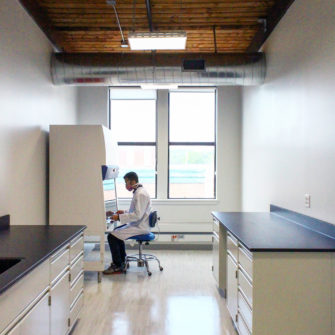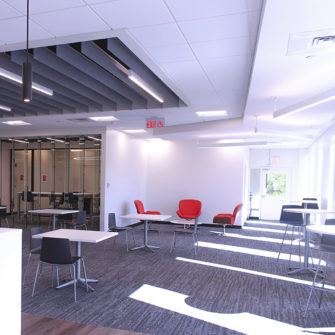Nearly 20 years ago, as a young designer at Payette, I had the opportunity focus on the design the teaching laboratories for Vanderbilt University’s new chemistry building. It gives me great pride to know that the innovations that we achieved in those designs have become the model for nearly all the organic chemistry teaching labs built in the US since then. The innovations were driven by curriculum changes in which universities began to base the lab work on fume hood activities rather than bench activities. This change was the result both of safety concerns and of the desire to give students the experience they would need to work in professional laboratory environments. But how could all these hoods fit in a lab (one station per student?). After a bench marking tour of teaching labs nationwide with the faculty, we collectively rejected the designs, in fashion at the time, that placed the bulky fume hoods in the center of the laboratory space, where they served as visual impediments. Even the schemes to use “see through” fume hoods were disappointing, in our view, as the multitude of reflections did not reduce the visual impediment…
Read more about Mark’s article on innovations in teaching lab design in High Profile.

